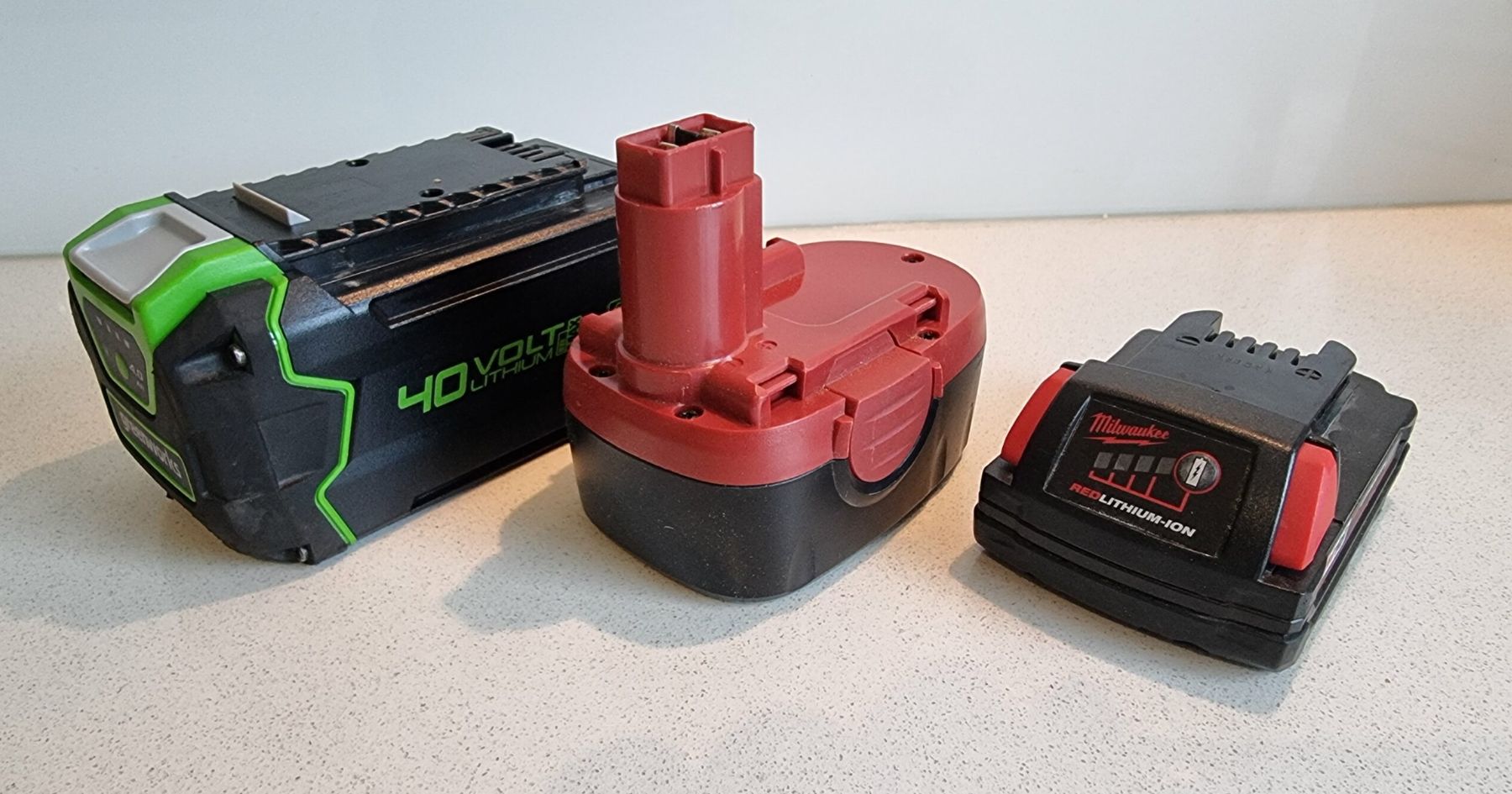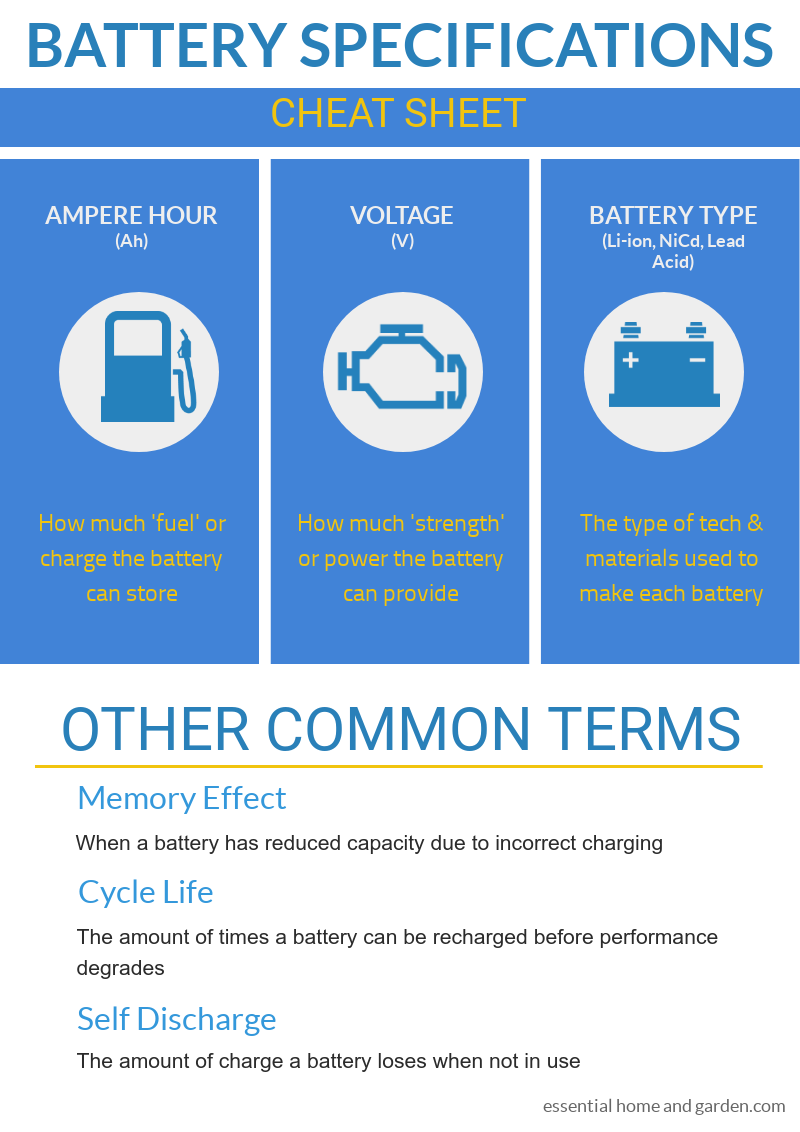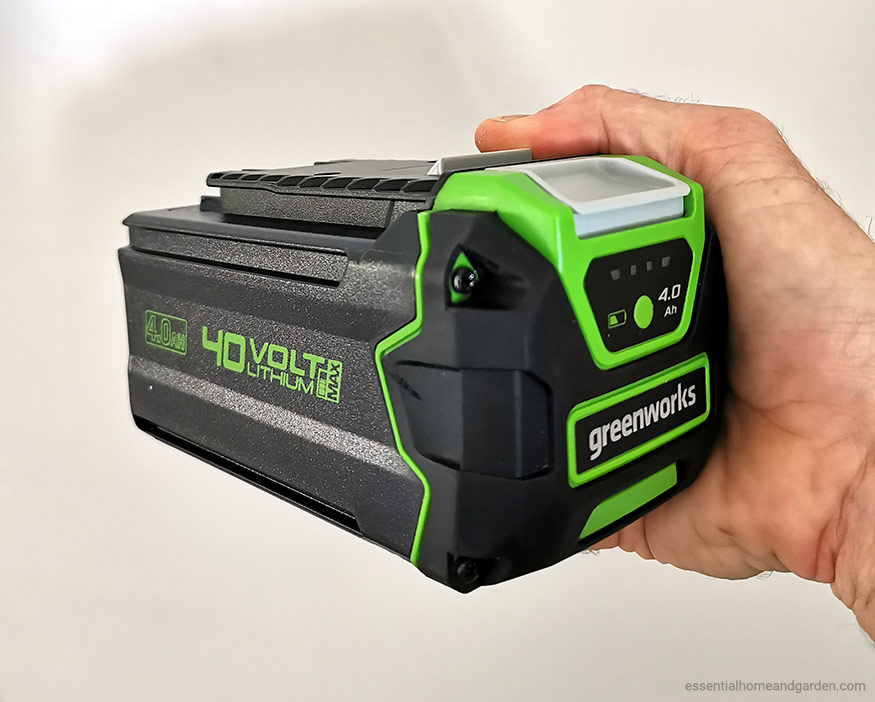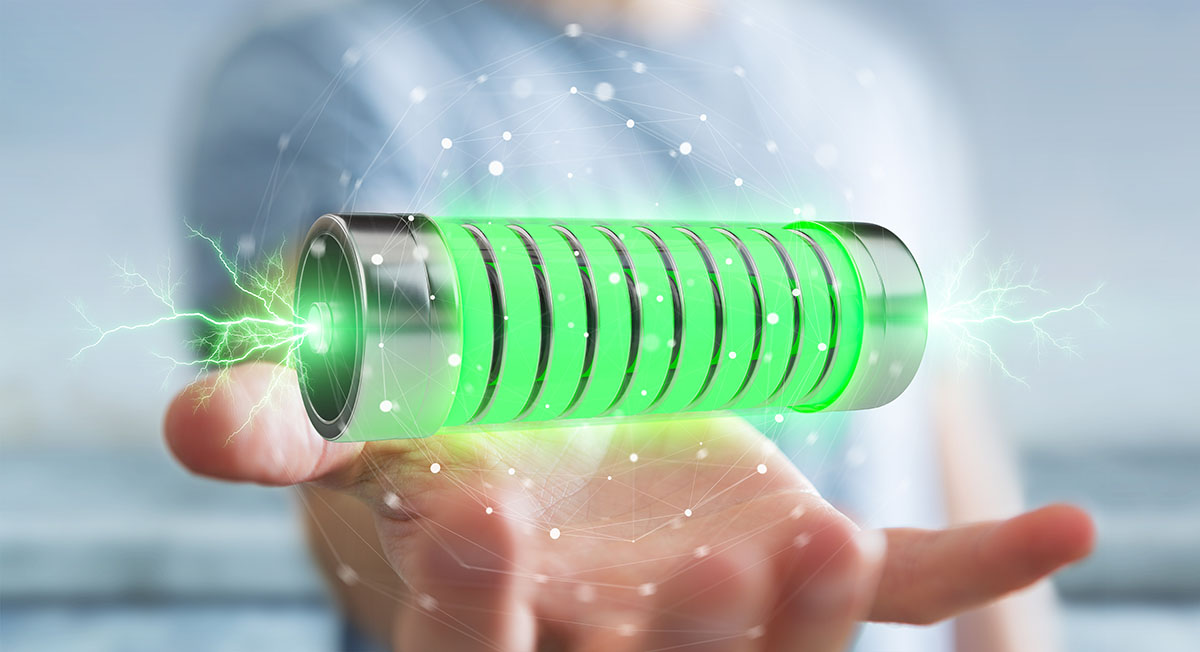We’ve all been there. You’re on the last screw of a project, the finish line is in sight, and then… whirrrrr… sputter… silence. Your cordless drill gives up the ghost. The culprit? A dead battery. It’s a moment of frustration that can derail your entire weekend project.
Picking the right battery isn’t just about avoiding that moment; it’s about getting the best performance from your tools every time you pull the trigger. Let’s get you powered up with the right knowledge.
Key Takeaways
- Lithium-Ion is King: For most people, Lithium-Ion (Li-ion) batteries are the way to go. They’re lighter, last longer on a single charge, and don’t have the “memory effect” of older types.
- One System to Rule Them All: Sticking with a single brand’s battery platform (like DeWalt’s 20V MAX or Ryobi’s ONE+) saves you money and cuts down on workshop clutter.
- Storage Smarts: To make your batteries last, store them in a cool, dry place (think a closet, not a hot garage) at around 50% charge. Extreme temperatures are the enemy.
- Don’t Toss ‘Em: When a battery finally bites the dust, don’t just throw it in the trash. Most home improvement stores have recycling programs to handle them safely.
Types of Power Tool Batteries
When you’re browsing the tool aisle, you’ll mainly run into two kinds of batteries. They might look similar, but what’s inside makes a world of difference.
Lithium-Ion (Li-ion) Batteries
These are the modern standard for a reason. Li-ion batteries pack a serious punch in a lightweight package, meaning your arm won’t feel like it’s going to fall off after holding a drill over your head for ten minutes.
They also hold their charge for months in storage and charge up fast—most can go from empty to full in under an hour. Plus, they’re better for the environment since they don’t contain toxic heavy metals. The trade-off? They typically have a higher price tag upfront.
Nickel-Cadmium (NiCd) Batteries
Think of NiCd batteries as the old, trusty farm truck of the power tool world. They’re tough as nails, can take a beating, and handle extreme hot and cold temperatures better than their Li-ion cousins. They’re also easier on the wallet, which makes them tempting for light-duty or occasional use.
The downsides are pretty clear, though….
They are noticeably heavier, and they contain cadmium, a toxic material that makes disposal a real headache.
You have to take them to a special recycling facility. They also suffer from the “memory effect”—if you don’t fully drain them before recharging, they can “forget” their full capacity.
Li-ion vs. NiCd: Head-to-Head
| Feature | Lithium-Ion (Li-ion) | Nickel-Cadmium (NiCd) |
|---|---|---|
| Weight | Lighter, less user fatigue | Heavier and bulkier |
| Performance | Consistent power, longer runtime | Power fades as it drains |
| Cost | More expensive upfront | Cheaper to buy |
| Lifespan | Longer overall lifespan | Shorter lifespan, “memory effect” |
| Environmental Impact | Easier to recycle, no toxic metals | Contains toxic cadmium, hard to dispose of |
| Best For | Professionals and serious DIYers | Occasional use, extreme temperatures |
Top-Rated Power Tool Batteries of 2025
When you’re ready to invest, these five batteries consistently get rave reviews from pros and weekend warriors alike.
The DeWalt 20V MAX XR Lithium-Ion Battery is a favorite among contractors for a reason. Its impressive capacity means your tools just keep going, which is a lifesaver when you can’t afford downtime on a job.
For pure muscle, the Milwaukee M18 REDLITHIUM XC 5.0Ah Battery is a beast. It’s built to handle demanding job sites and heavy use with out losing performance, from freezing cold to scorching heat.
If you hate waiting, the Makita 18V LXT Lithium-Ion Battery is for you. It’s known for its incredibly fast charging times, so you can get back to work instead of staring at a charger.
Already have a garage full of green tools? The Ryobi 18V ONE+ High Capacity Battery offers great value. It works with over 280 (and counting!) of Ryobi’s tools, making it a super affordable way to build a versatile cordless collection. Ryobi also have a range of 40v batteries.
For those loyal to Team Blue, the Bosch 18V Power for All Battery lives up to its name. The ability to swap one battery between your drill, sander, and even your lawnmower is a huge convenience.
Extending the Lifespan of Your Power Tool Battery
A good battery is an investment, and like any good tool, it pays to take care of it. With a few simple habits, you can add years to your battery’s working life and make sure your tools is ready when you are.
Proper Charging and Storage
First off, use the charger that came with your battery. It seems obvious, but using a knock-off or a charger from another brand can damage the cells. Once it’s fully charged, take it off the charger. Leaving it on for days can generate extra heat and slowly cook the battery.
Temperature is a battery’s biggest friend and worst enemy.
The sweet spot for storage is a cool, dry place, like a closet or basement shelf, ideally between 50-77°F. A hot car trunk or a freezing shed can permanently wreck the battery’s chemistry. If you won’t be using a battery for a few months, charge it to about 40-50% before putting it away.
Simple Maintenance
Every so often, give the metal contacts on your battery a wipe with a clean, dry cloth. Grime and corrosion can prevent a good connection and mess with charging. Give the case a quick look-over for any cracks or swelling—those are red flags that the battery might be failing.
Most importantly, use your batteries! Li-ion batteries, in particular, do better with regular use. If you have a few, rotate them so they all get some action.
The End of the Road
You’ll know your battery is on its way out when it doesn’t hold a charge for nearly as long as it used to, takes forever to charge, or gets strangely hot. If it’s swelling up or leaking anything, stop using it immediately.
And please, don’t just chuck it in the bin. As we mentioned in our Key Takeaways, old power tool batteries are considered hazardous waste. Luckily, most big-box home improvement stores have recycling bins right by the entrance, making responsible disposal easy.
Do Universal Batteries Actually Work?
If you’re tired of a workbench cluttered with a mess of different chargers, you might be curious about universal batteries. The idea of one battery platform for all your tools is tempting.
Some companies sell adapters that let you, for example, pop a DeWalt battery onto a Milwaukee tool. They work, but they can be a bit clunky and add extra bulk to your tool.
You can also find third-party batteries online that claim to fit multiple brands. While they’re often cheaper, using them can void your tool’s warranty, so read the fine print before you buy.
Honestly, the best approach for most people is to pick one ecosystem such as:
And build your collection within it. This strategy gives you maximum battery interchangeability with zero fuss about performance or warranty problems.
The Future of Cordless Tool Batteries
Emerging Trends in Battery Technology
Battery technology has come a long way, especially with the introduction of lithium-ion batteries. These batteries offer many advantages over older types such as higher energy density, longer run time, faster charging, and lower weight.
However, there are still some challenges and limitations, like:
- high cost
- limited lifespan
- environmental impact
- safety issues.
Several emerging trends and innovations are on the horizon to address these challenges and improve the performance and efficiency of cordless tool batteries.
Solid State Batteries
Solid-state batteries use solid electrolytes instead of liquid or gel electrolytes, which can improve the energy density, safety, and durability of the batteries.
This is a significant advancement because it could potentially increase the life and performance of your cordless tools.
Graphene Batteries
Graphene batteries incorporate graphene, a single layer of carbon atoms, as a material for the electrodes or the electrolyte. This can increase the conductivity, capacity, and charging speed of the batteries, optimizing your cordless tool’s performance and reducing the time spent waiting for a recharge.
Wireless Charging
Wireless charging technology allows batteries to be charged without physical contact, using electromagnetic induction or resonance. This can reduce the hassle and wear of plugging and unplugging your batteries, making the charging process more convenient and efficient.
Frequently Asked Questions
How do I choose the right battery capacity for my cordless tool?
To choose the right battery capacity for your cordless tool, consider the power and run time needed for your projects. Battery capacity is measured in amp-hours (Ah), and a higher capacity means longer run times. Consider your project’s size and intensity when selecting a battery with the appropriate capacity.
What factors should I consider when comparing cordless battery brands?
When comparing cordless battery brands, consider factors such as performance, reliability, and price. Look for batteries with good reviews and those that are compatible with your cordless tool. You can also check for warranties or customer support services offered by the brand.
Are higher capacity batteries always better for cordless tools?
Higher capacity batteries offer longer run times, but they may also be heavier, which can cause fatigue during prolonged use. Depending on your project requirements, a heavier battery may not always be ideal. Consider the balance between run time and weight when choosing the right battery for your cordless tool.
How do I determine if a battery is compatible with my cordless tool?
To determine if a battery is compatible with your cordless tool, check the voltage and connection type. Make sure the battery and the tool are from the same brand or designed to work together. You can also refer to your tool’s user manual or the battery’s product description to ensure compatibility.
What is the difference between different battery voltages?
Battery voltage affects the power delivered to your cordless tool. Higher voltage batteries provide more power, allowing the tool to complete tasks more quickly and efficiently. However, this increased power may come at the cost of increased weight, which can be a factor to consider when selecting the right battery for your tool.
How can I prolong the life of my cordless tool battery?
To prolong the life of your cordless tool battery, follow these tips:
- Charge your battery frequently, even when not in use.
- Store the battery in a cool, dry place, away from direct sunlight and extreme temperatures.
- Use your battery frequently to avoid degradation due to inactivity.
- Avoid completely draining the battery; recharge it before it reaches a critically low level.



